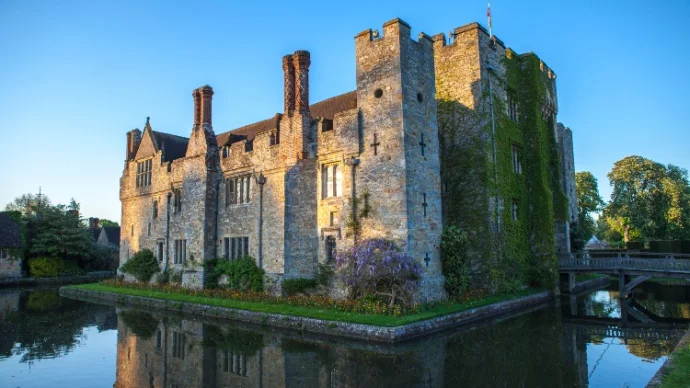Rochester Castle
Rochester, England, United Kingdom
One of the best-preserved Norman fortifications in England, Rochester Castle was built at a strategic crossroads in the years following the Norman Conquest. Today the castle has been largely restored and is open to visitors under the custodianship of English Heritage.

About Rochester Castle
One of the best-preserved Norman fortifications in England, Rochester Castle was built at a strategic crossroads in the years following the Norman Conquest.
Rochester Castle history
In 1087 Gundulf, Bishop of Rochester began the construction of the castle to command an important river crossing. One of William the Conqueror’s greatest architects, Gundulf was also responsible for the Tower of London. Much of what remains of the walled perimeter remains intact from that time.
William de Corbeil, Archbishop of Canterbury was also a contributor to this grand castle building project.
Its Norman tower-keep of Kentish ragstone was built about 1127 by William of Corbeil, Archbishop of Canterbury, with the encouragement of Henry I. Consisting of three floors above a basement, it still stands 113 feet high. Attached is a tall protruding forebuilding, with its own set of defences to pass through before the keep itself could be entered at first floor level.
In 1215, garrisoned by rebel barons, the castle endured an epic siege by King John. Having first undermined the outer wall, King John used the fat of 40 pigs to fire a mine under the keep, bringing its southern corner crashing down. Even then the defenders held on, until they were eventually starved out after resisting for two months.
Rochester Castle played no role in the Civil Wars and so it was never slighted. It appears, however, that a violent fire took place in the keep before the 1660s, which reduced the building to ruin.
Artists and writers, including Samuel Pepys in the 17th century and Charles Dickens in the 19th, recorded their impressions of the vast interior and the impressive views from the top of the keep.
In 1870 Rochester Corporation leased (and later bought) the castle and opened the grounds, on the site of the bailey, to the public as gardens. Repairs were carried out in the early 20th century. The Ministry of Works assumed control of the keep in 1965, and responsibility passed to English Heritage in 1984. Since 1995 the City of Rochester, now Medway Council, has managed both the keep and the Castle Gardens.
Rochester Castle today
Today the castle has been largely restored and is open to visitors under the custodianship of English Heritage. Rochester Castle remains one of the most impressive Norman fortresses and continues to attract visitors from far and wide.
Getting to Rochester Castle
The nearest train station is Rochester which is half a mile away. There is no parking directly on site, however there are a number of pay and display (coin operated) car parks located near by. There is a free of charge coach park located in nearby Corporation Street, and a coach drop off point at the rear of the visitor information centre.
Featured In

10 Must-See Medieval Landmarks in England
Discover the rise and fall of medieval Britain at these atmospheric sites.

Norman Sites in Britain
Discover the best Norman sites in Britain, from Pevensey to Rochester Castle and more.

Kent's Historic Sites
Towering cathedrals, ancient Roman wall art, huge wartime forts and Charles Darwin's house are just a few of the historic attractions that Kent has to offer. Check out our selection here.




















